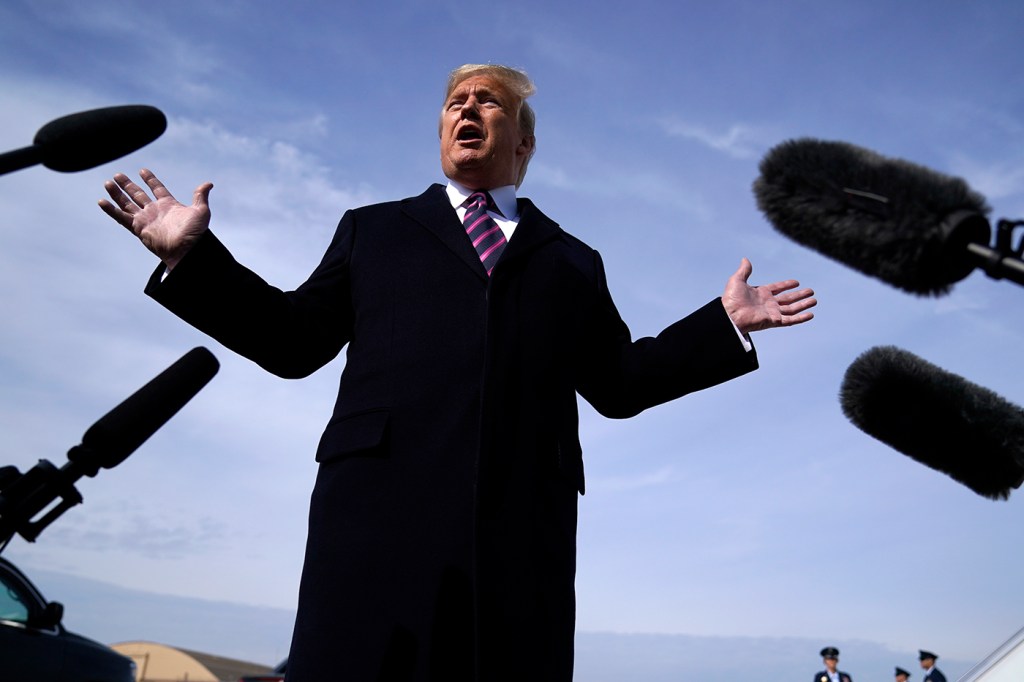Is the mainstream media biased, or are readers and listeners?

Another day, another billionaire adding yet another major news publication to their media empire.
It’s not exactly new news: German publishing giant Axel Springer’s acquisition of Politico, the Virginia-based media company that focuses exclusively on politics. But the deal, which The Washington Post explicates in a recent deep dive on Axel Spinger’s CEO Mathias Döpfner, paints a perplexing portrait: powerful media mogul, with stated sympathies to Donald Trump, accuses mainstream media of becoming too partisan, then promises an editorial reboot in favor of an elusive, balanced “middle way.”
“We want to prove that being nonpartisan is actually the more successful positioning,” he told The Washington Post.
What editorial changes may be coming to Politico remains to be seen, says Jonathan Kaufman, director of the School of Journalism. While Döpfner claims that mainstream news has become, in his words, “too polarized,” such polarization hardly describes outfits like Politico, which has a national reputation for horse-race coverage and “inside baseball” for political junkies, Kaufman says.
Still, charges of media bias—particularly as it pertains to political coverage—from business leaders, consumers of news, politicians and others are routinely raised in public discourse, reflecting not just the deep partisan divisions in society, but an appetite for greater balance. Kaufman says such assertions do not fully reflect actual journalistic practices, as the industry transitions away from print advertising to focus on another imperative: digital audience and subscription growth.
“The idea of overt political bias I don’t think is the issue here,” he says. “I think the issue has more to do with marketing and competition for reader attention.”
The decisions driving newsrooms about what to cover—and how to cover it—are driven less by political or ideological forces and more by efforts on part of executives, in conversation with editors, to reach audiences amid a still-ongoing shift to digital news, he says.
Indeed, newsrooms today are more in tune with reader demands than they were in years past, measuring digital traffic and engagement—literally—by the story. Those metrics, in part, inform the direction reporters and editors take in their coverage, Kaufman says.
One problem contributing to the perception of bias is the blurred lines between news and opinion on news publications’ websites. Hard news stories and opinion pieces or columns sometimes appear side-by-side, Kaufman says. In fact, only 40% of large news organizations distinguished between article types through labels, with nearly all only labeling opinion columns, according to a Duke Reporters’ Lab study.
Whereas newspapers were once careful to delineate opinion or commentary from straight news in print, many publishers are still grappling with how to effectively do so online, Kaufman says.
“It was always very clear: the front section was for straight news, and then there was a separate section for opinions and editorials,” says Kaufman, who used to lead hundreds of reporters as executive editor for company news at Bloomberg News.
But the pull of partisanism has been with the newspaper industry in the U.S since its beginnings in the mid-19th century, when journalism began to take shape. In fact, the earliest papers were funded by political parties.
“If you go back to the 1800s, newspapers started out very partisan, as house organs essentially,” says Matthew Carroll, journalism professor of the practice at Northeastern and Pulitzer Prize-winning journalist for the Boston Globe. “As they grew, advertisers wanted things more down the middle. They didn’t want to be identified” with one or another extremist viewpoint.
Of course, a discussion of news media bias today can’t take place without mentioning the elephant in the room: Donald Trump. Trump’s foray in politics was accompanied by a vortex of news coverage across all forms of media unlike anything seen before, Kaufman says. Trump and his allies would repeatedly attack the mainstream media in an effort to counter negative press, so much so that it became a political tactic weaponized by many within the Republican Party.
But Trump’s hostility toward the media only thrust him further into the limelight. Kaufman says that in the lead up to the 2016 presidential election and subsequently during Trump’s presidency, TV news outlets like CNN found that more people tuned in when Trump was a core part of the coverage. That precipitated a vicious cycle in which Trump dominated all news coverage, with left-leaning outlets—such as the New York Times, in print, and MSNBC and CNN, on television—devoting more air time and column inches to the former president than they would under ordinary circumstances.
No doubt, the avalanche of Trump content, and the imperative to cover the former president, sidelined stories and issues of importance to everyday citizens, Kaufman says.
“The challenge is that all newsrooms want to be part of a national conversation and have an impact,” he says. “But a lot of readers, viewers and listeners don’t see themselves in the news coverage—what issues are impacting them, who they are voting for, etc.”
Still, for as much as publics around the world desire to see more “unbiased news,” people still flock to news sources that fit their world view.
“When you ask readers, viewers and listeners about bias, they all say they would like to see more non-partisan news,” he says. “But their reading and viewing habits are still the same, which is that, now more than ever, people are going to news sources that reinforce what they think rather than challenge it, and I’m not sure people’s behavior is going to change.”
For media inquiries, please contact media@northeastern.edu.






